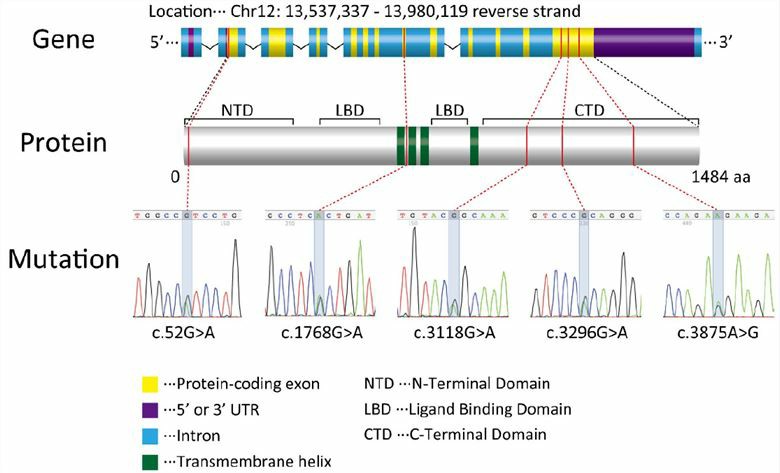GRIN2B and Associated Diseases
With more than 10 years of experience in CRO services, Creative Biolabs has a team of skilled scientists who will work with you to develop the gene therapy program you are interested in, and we have earned a global reputation for providing professional, tailored customer service and exceptional customer assistance to numerous clients.
Backgrounds of GRIN2B Gene
The GRIN gene family encodes three classes of NMDA receptor (NMDAR) subunits: GluN1 which binds to glycine (a product of GRIN1), GluN2 which binds to glutamate (GRIN2A, GRIN2B, GRIN2C, and GRIN2D), and the enigmatic GluN3 that binds to glycine. The GRIN2B (glutamate receptor, ionizing, N-methyl-D-aspartate 2B) gene is located on the short arm of chromosome 12 and encodes the NR2B subunit of the N-methyl-D-aspartate receptor, which has recently been suggested to play an important role in the cortical formation and brain plasticity. GRIN2B represents a rate-limiting genetic factor in gating the N-methyl-D-aspartate receptor’s function in the developing and mature mammalian brain. GRIN2B has also been shown to be involved in the long-term reinforcement of synaptic transmission, a mechanism in memory and learning processes.
Functions of GRIN2B Gene
GRIN2B encodes the GluN2B subunit and is a high-confidence ASD gene. GluN2B is highly expressed in early human brain development and has important roles in neurogenesis and neural circuit formation. Homozygous GRIN2B-null mice die early after birth due to an impaired suckling response and exhibit impaired hippocampal long-term depression. Thus, GRIN2B is an essential gene for normal development. GRIN2B is predominantly associated with developmental delay, intellectual disability, and an autism spectrum disorder. GRIN2B has been proposed as a potential gene whose variants may increase the risk of autism.
Mutations in the GRIN2B Gene and Associated Diseases
Mutation-related disruption in the GluN2B subunit expression or function might give rise to many neurodevelopmental phenotypes that reflect alterations in circuit formation, neuronal connectivity, synaptic plasticity, and excitatory transmission. Mutations in the GRIN2B gene lead to abnormal subunit functioning affecting neuronal ion flux resulting in developmental abnormalities and epilepsy. GRIN2B variations have been identified in GRIN2B-related neurodevelopmental disorders, such as ID, ASD, Atypical Rett Syndrome & intractable epilepsy, encephalopathy, developmental delay or macrocephaly, schizophrenia, obsessive-compulsive disorder, and cerebral visual impairment, causing cells to create an inactive GluN2B protein or prevent them from making any GluN2B protein. Genetic variations in the GluN2B coding gene (GRIN2B) have consistently been linked to West syndrome, intellectual impairment with focal epilepsy, developmental delay, macrocephaly, corticogenesis, brain plasticity, as well as infantile spasms, and Lennox-Gastaut syndrome. GluN2B-deficient zebrafish showed wild-type spontaneous swimming, visuomotor responses, and photo-startled responses, and were able to capture paramecium, although capture was slightly reduced.
 Fig.1 Variants with respect to the secondary structure of GRIN2B. (Takasaki, 2016)
Fig.1 Variants with respect to the secondary structure of GRIN2B. (Takasaki, 2016)
Creative Biolabs has unique R&D expertise. Our scientists have extensive experience and outstanding skills in the field of gene therapy. Our goal is to provide our clients with affordable development services and reliable results. We have been selected by our large pharmaceutical and biotech customers. Contact us to find out how we can support your gene therapy development needs or complete a customized quote form above.
Reference
- Takasaki, Y.; et al. Mutation screening of GRIN2B in schizophrenia and autism spectrum disorder in a Japanese population. Scientific reports. 2016, 6(1): 1-7. Distributed under Open Access license CC BY 4.0, without modification.
